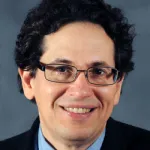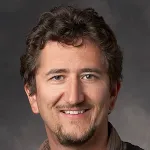
Photo by Image Point Fr, Shutterstock.
Stanford Medicine News Center - December 22nd, 2016 - by Krista Conger
A subgroup of patients with a devastating brain tumor called glioblastoma multiforme benefited from treatment with a class of chemotherapy drugs that two previous large clinical trials indicated was ineffective against the disease, according to a study at the Stanford University School of Medicine.
Specifically, patients in the subgroup who were treated with chemotherapy drugs that block the growth of new blood vessels in the tumor lived an average of about one year longer than those who were given other classes of chemotherapy drugs, the researchers found.
The retrospective study emphasizes the importance of properly categorizing tumors with varied biology in order to best personalize treatment for each patient. Lumping all glioblastoma patients together as one group led to the flawed conclusion that no patients benefited from anti-angiogenesis treatments, the researchers said.
“Traditionally, glioblastoma patients are given this diagnosis based on the histology of their tumor, and then assigned a grade and a stage,” said Daniel Rubin, MD, associate professor of biomedical data science, of radiology and of medicine. “But this information is not always specific enough to clearly inform treatment. We’ve developed a new method of classifying glioblastomas by quantitatively analyzing the magnetic resonance imaging that is routinely performed during diagnosis.”
Rubin is the senior author of the study, which was published online Dec. 22 in Neuro-Oncology. Postdoctoral scholar Tiffany Ting Liu, PhD, is the lead author of the paper.
A deadly brain tumor
Glioblastoma multiforme, also known simply as glioblastoma, is one of the most common, and most deadly, brain tumors. About 12,000 people in the United States are diagnosed each year. The median survival is about 15 months after diagnosis. Until recently, clinicians and patients pinned their hopes on a class of chemotherapy drugs called anti-angiogenic compounds that are meant to block the growth of new blood vessels into the tumor. Blocking this growth, they believed, should starve the tumors of oxygen and nutrients. However, two large, phase-3 clinical trials recently reported in The New England Journal of Medicine concluded that one such drug, bevacizumab, conferred no survival benefit on glioblastoma patients.
Liu, Rubin and their colleagues wondered if there might be a subgroup of glioblastoma patients that could still be helped by the treatment. They studied the medical records and diagnostic images of 69 glioblastoma patients who had been treated at a local medical center and 48 patients from a national database known as The Cancer Genome Atlas.
The researchers used specialized software to categorize each patient into one of two groups based on the degree of vascularization of the patients’ brain tumors. Those whose tumors were more highly vascularized — as determined by an imaging technique called perfusion MRI — were significantly more likely to benefit from treatment with anti-angiogenic therapies than those whose tumors were less well vascularized.
Differences in glioblastoma biology
Perfusion MRIs are routinely conducted as part of the diagnostic procedure for brain tumor patients. The researchers found that each of the 117 patients fell neatly into one of two clusters: 51 of the patients had tumors that were highly vascularized, and 66 had tumors that were not as well vascularized. Further investigation showed that the highly vascularized tumors also expressed more genes involved in blood vessel growth and in protecting cells from conditions of low oxygen called hypoxia than tumors of patients in the other group.
The researchers then looked to see what treatments the individual patients had received, and how they fared.
“The most exciting finding was that those members in the highly vascularized group who had received anti-angiogenic treatment lived significantly longer — on average more than a year more — than others in the same group who did not get anti-angiogenic therapy,” said Rubin. “And this analysis was performed using images that already exist as part of the diagnostic procedure for this disease. Our findings speak to the fact that the biology of glioblastoma can vary significantly among individuals, and that certain subgroups of patients may benefit from treatments that appear ineffective when screened across a large unselected mix of patients.”
Rubin and his colleagues hope their study will reignite the conversation about the use of anti-angiogenic therapies in glioblastoma, while also enhancing the understanding of the varied biology of the disease.
“This is a turning point,” said Rubin. “We believe we can identify those people who are likely to benefit from anti-angiogenic treatments, and also begin to think outside the box to identify other types of therapies for those who are unlikely to respond. This shows that subtyping cancers like glioblastoma can have a huge impact on how we treat disease.”
The work is an example of Stanford Medicine’s focus on precision health, the goal of which is to anticipate and prevent disease in the healthy and precisely diagnose and treat disease in the ill.
Other Stanford co-authors are adjunct clinical instructor Lex Mitchell, MD; former medical student Scott Rodriguez, MD; medical student Abdullah Feroze; clinical assistant professor of radiology Michael Iv, MD; clinical instructor of radiology Christine Kim, MD; clinical assistant professor of neurosurgery Navjot Chaudhary, MD; assistant professor of medicine and of biomedical data sciences Olivier Gevaert, PhD; professor of neurosurgery Griffith Harsh, MD; and professor of neurosurgery Steven Chang, MD.
The research was supported by the National Institutes of Health (grants U01CA142555, U01CA190214 and R01EB020527).
Stanford’s departments of Biomedical Data Science, of Radiology and of Medicine also supported the work.



